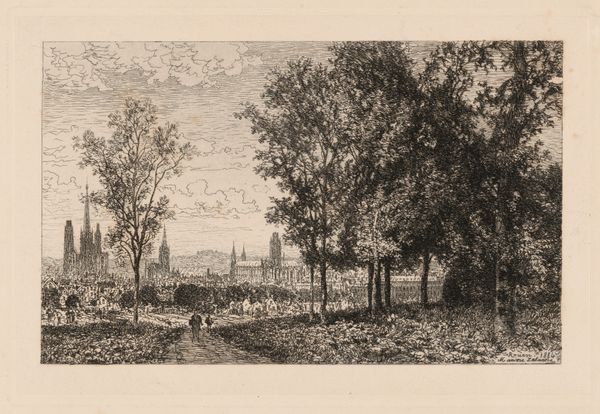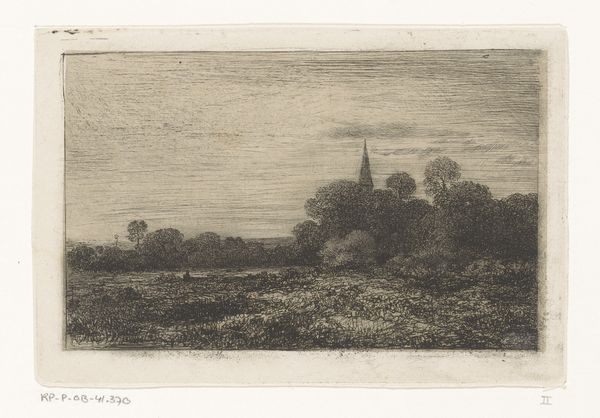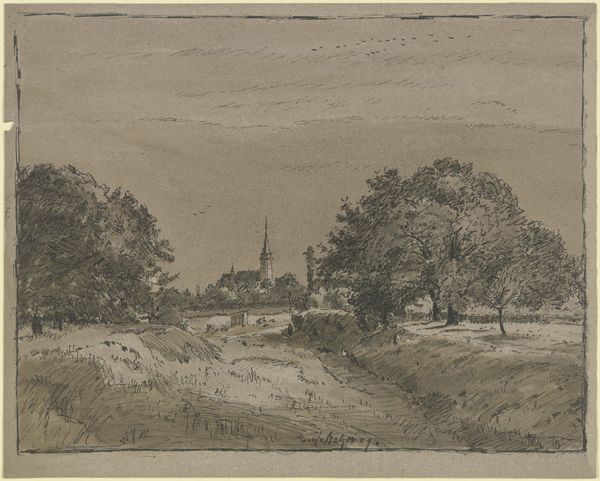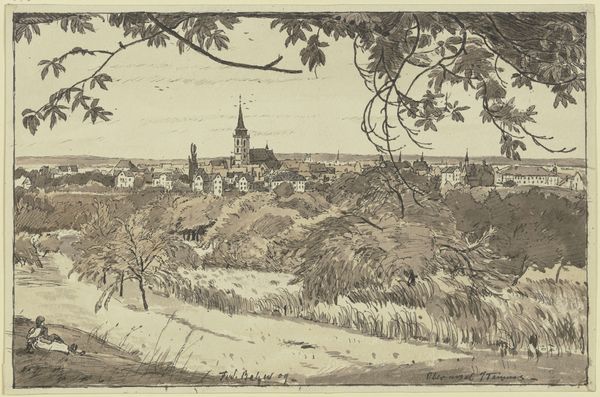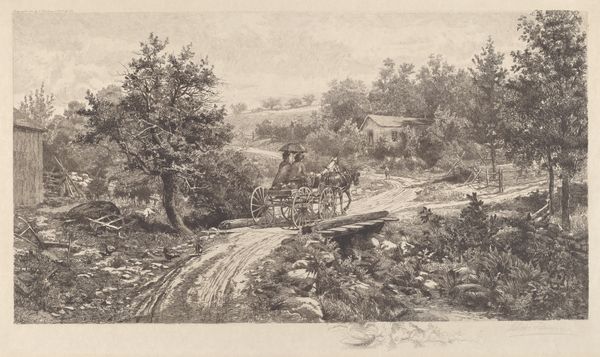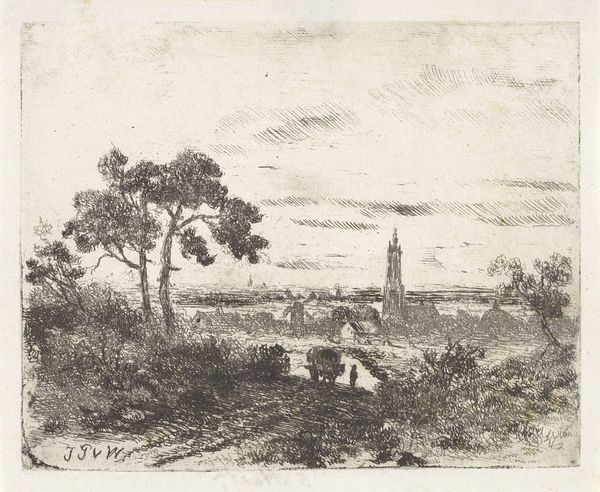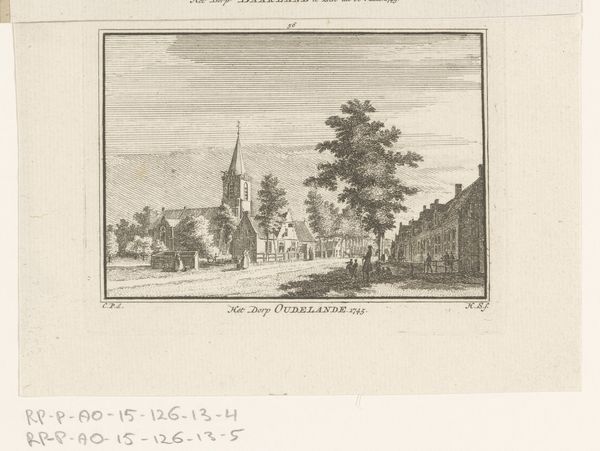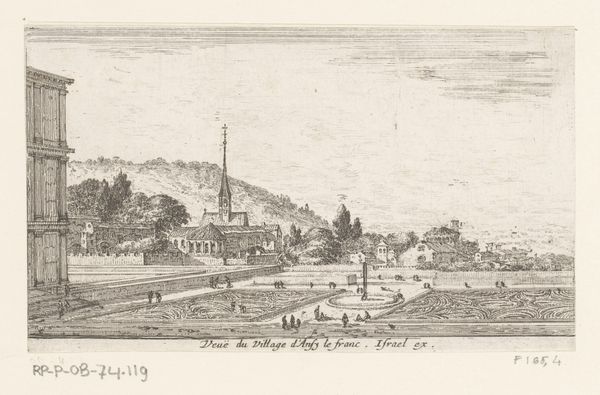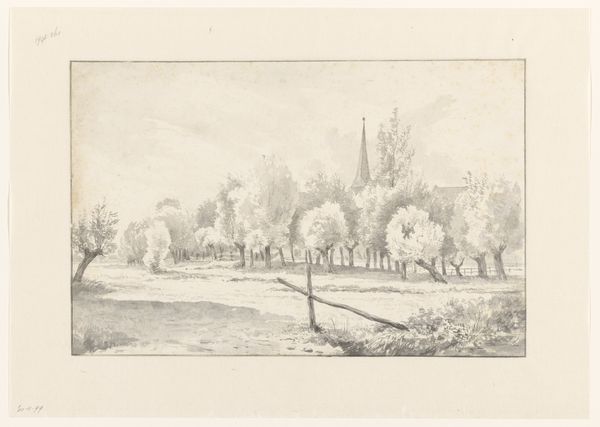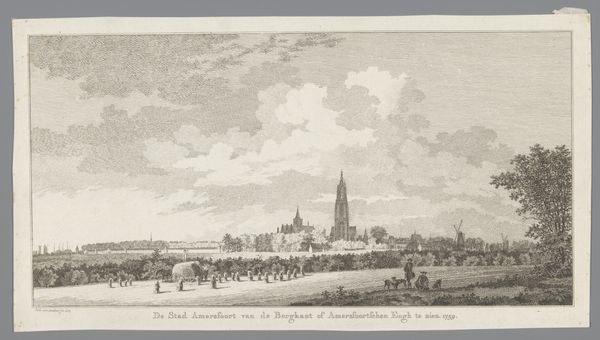
Dimensions: image: 7.4 × 12.8 cm (2 15/16 × 5 1/16 in.) sheet: 19.3 × 28.3 cm (7 5/8 × 11 1/8 in.)
Copyright: National Gallery of Art: CC0 1.0
Curator: Here we have Maxime Lalanne's "Evening Landscape (Return to the Lodgings)," created in 1886. It's a compelling example of realism executed through etching. Editor: It's…quiet, almost mournful. The figure walking away, the looming church spire—everything feels a little solitary. It reminds me of a very muted twilight feeling, perhaps reflecting on life's quiet journeys? Curator: Etching was really gaining traction at this point, allowing for the mass production and dissemination of images, particularly landscape scenes that appealed to the growing middle class. Notice how Lalanne uses line to create depth, essentially building up tonal values. Editor: Absolutely, you can almost feel the roughness of the road. He definitely embraced the process—leaving his mark visible within the strokes. Did he intentionally show the labour involved in the artistic process? It feels like a raw connection. Curator: Precisely! And it mirrors the labor inherent in rural life, right? Consider also the rising popularity of print collecting amongst the bourgeoisie at that time, feeding a market hungry for accessible yet refined artistic expression. Lalanne bridges the gap between "high art" and popular imagery, meeting the desires of his consumers. Editor: That explains why the level of details within the landscape feels very ordinary; no heroic figures or idealised views. Instead, it grounds the image in everyday work and experience. It’s both real and intimate— like watching a scene unfold and becoming part of it yourself. It’s lovely. Curator: And the subtle commentary on urbanization – this rustic figure juxtaposed against the centralized church… it speaks volumes about shifts in societal structures. Editor: Indeed. Even something that seems straightforwardly "landscape" has layers of engagement with real social anxieties around how individuals position themselves inside the rapid changing modern environment. The craftsmanship adds another layer: beautiful and humble. Well spotted. Curator: Glad you feel so. A poignant piece demonstrating a period's shifting production methodologies. Editor: Thank you. I am now left thinking of the beauty of small moments that reflect upon greater things. A fitting image indeed.
Comments
No comments
Be the first to comment and join the conversation on the ultimate creative platform.

